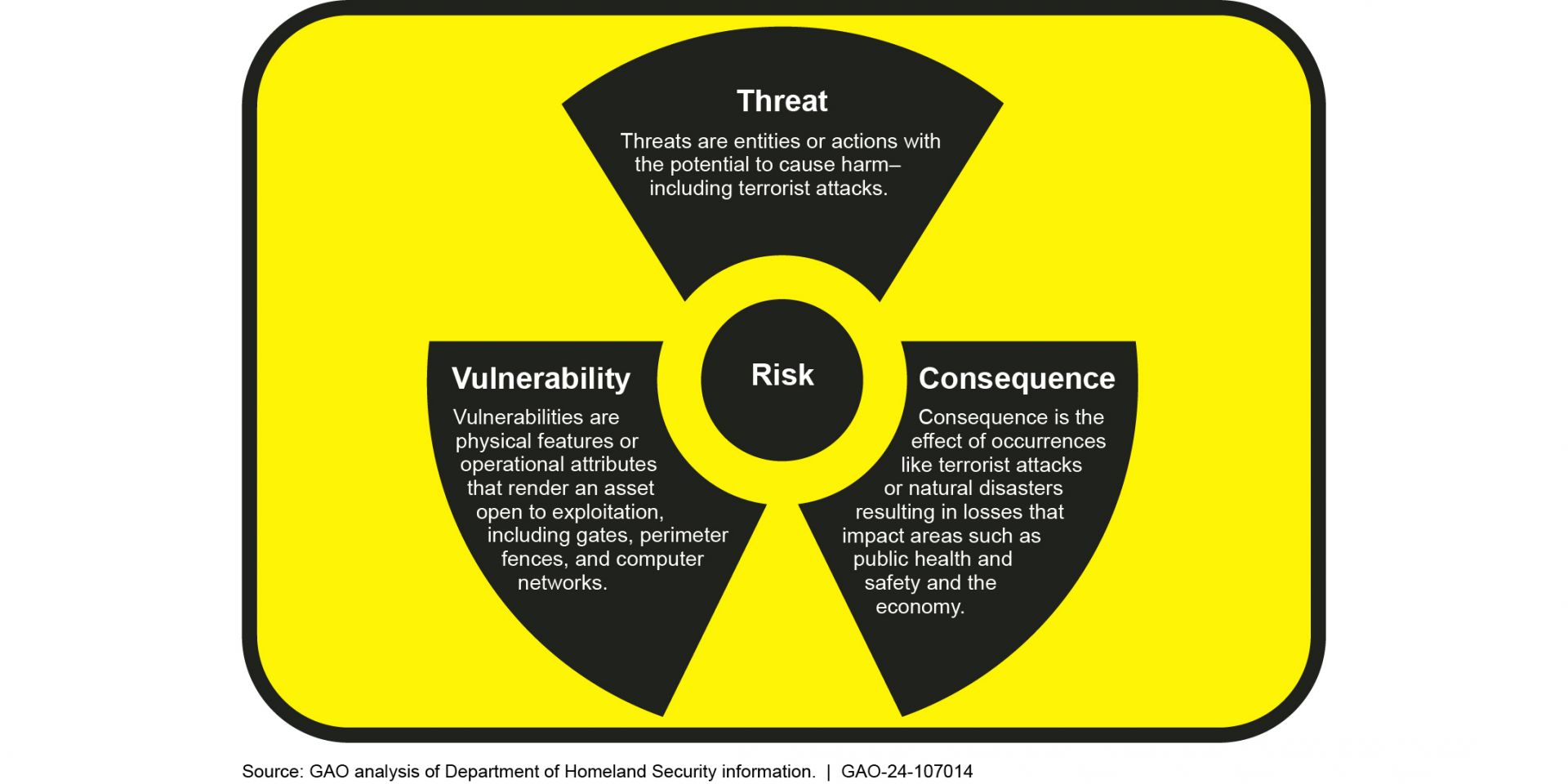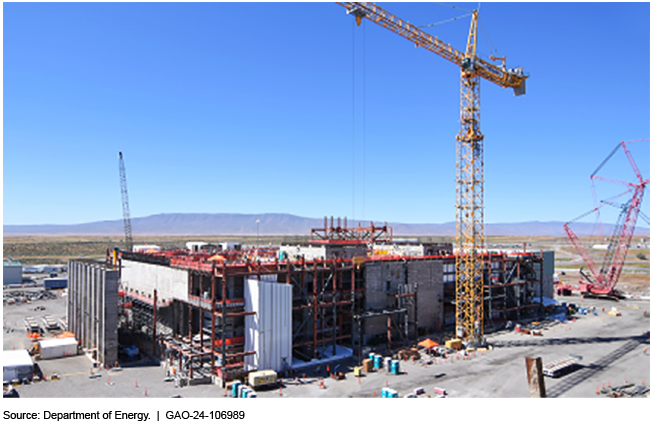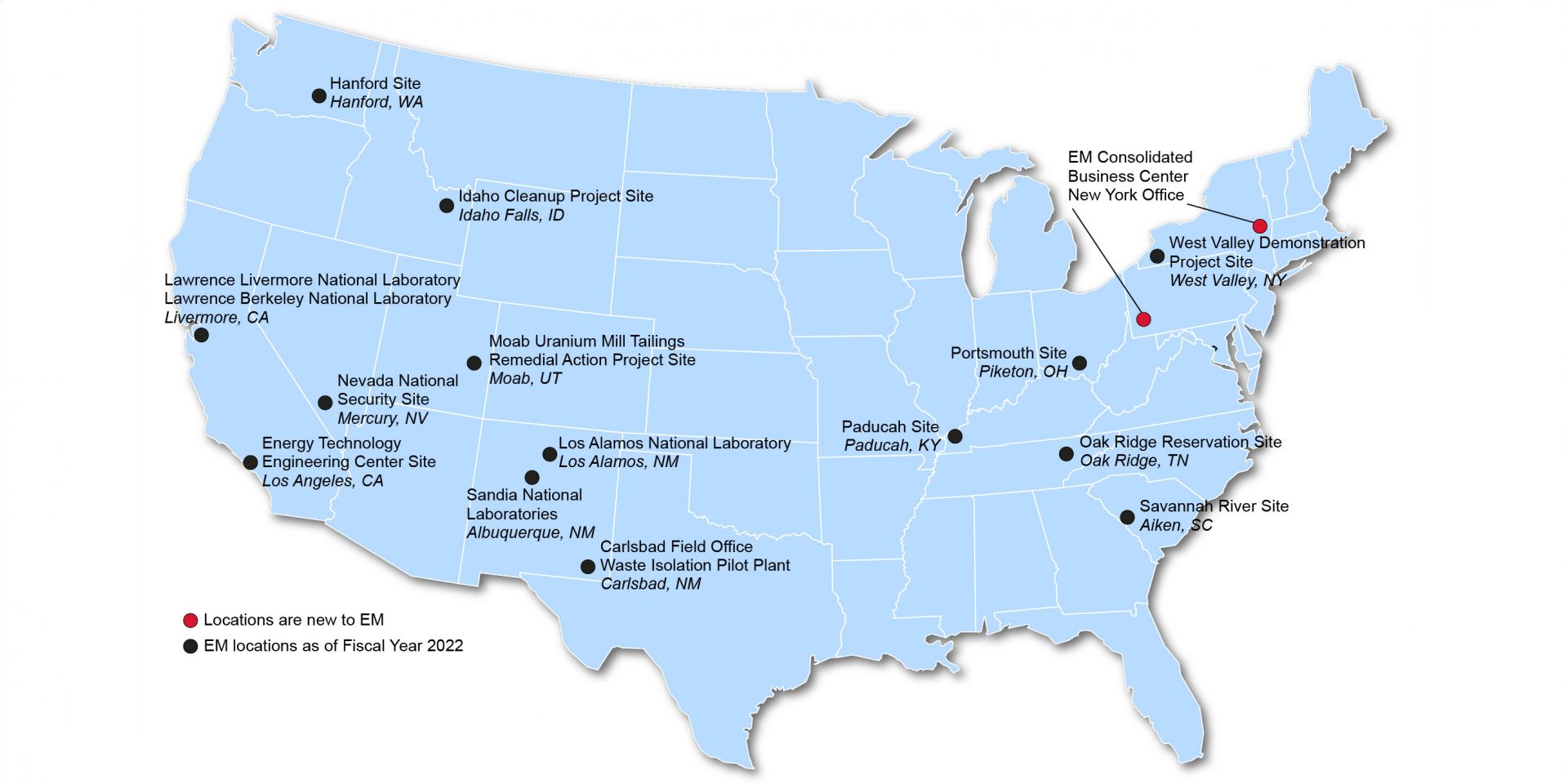A worker scans excavated soil at the DOE’s Oak Ridge site in this 2022 photo to ensure it contains no radioactive contaminants. (Photo: DOE)
Better information regarding the specific work needed to finish cleaning up contaminated soil and legacy landfills at Department of Energy nuclear sites could help the department better prioritize cleanup projects and improve budgeting decisions, according to an audit by the Government Accountability Office.
The three elements of radioactive material risk (Image: U.S. GAO)
A new report from the U.S. Government Accountability Office finds that the Nuclear Regulatory Commission has not taken the steps needed to address the potential economic and societal radiological risks that could arise from a “dirty bomb.”
Hanford’s HLW Facility under construction in early 2024. (Photo: Bechtel National)
The Government Accountability Office has recommended that the Department of Energy put a hold on construction of its High-Level Waste Facility at the Hanford Site near Richland, Wash. The GAO said design and construction of the facility, part of Hanford’s Waste Treatment and Immobilization Plant, also known as the Vit Plant, should be paused until several actions are taken, including considering other alternatives for managing the site’s high-level radioactive liquid waste.
Locations of DOE-EM cleanup sites. (Map: GAO)
Despite efforts to increase hiring, the Department of Energy’s Office of Environmental Management continues to be understaffed, according to a recent Government Accountability Office report. The GAO found that, at the end of fiscal year 2023, DOE-EM had 263 vacant positions across its headquarters, cleanup sites, and EM Consolidated Business Center—a vacancy rate of 17 percent. The office is responsible for the cleanup of the environmental legacy waste resulting from decades of nuclear weapons production and government-sponsored nuclear energy research.
Hanford’s Waste Treatment and Immobilization Plant. (Photo: DOE)
A pair of recent reports by the U.S. Government Accountability Office and the National Academies of Science, Engineering, and Medicine highlight some of the challenges the Department of Energy faces in treating the millions of gallons of legacy radioactive waste at the Hanford Site in Washington state.
A DUF6 storage cylinder is moved at the Portsmouth DUF6 conversion facility. (Photo: DOE)
The Government Accountability Office is recommending that Congress clarify the Department of Energy’s legal authority to sell depleted uranium hexafluoride (DUF6) left over from uranium enrichment operations at the department’s Portsmouth Site in Ohio and the Paducah Site in Kentucky.
Rep. Jamaal Bowman during a hearing of the House Science, Space, and Technology Subcommittee on Energy.
The House Science, Space, and Technology Subcommittee on Energy held a hearing last week to evaluate the Department of Energy’s approach to research and development on new strategies and technologies to support the nuclear waste cleanup mission of its Office of Environmental Management (EM).
Workers construct a new ventilation system's filter building last year at WIPP. (Photo: DOE)
Without a plan for addressing issues in completing construction projects at the Waste Isolation Pilot Plant in New Mexico, the Department of Energy cannot ensure that further cost increases and schedule delays will not continue, according to a report by the Government Accountability Office. In particular, the GAO said, the DOE has not developed a corrective action plan to address root causes identified for the rising cost and the delay in building a new ventilation system at the transuranic waste repository.
Spent nuclear fuel in dry storage at the decommissioned Zion nuclear power plant in Illinois.
Congress needs to take action to break the impasse over a permanent solution for commercial spent nuclear fuel, according to a report by the U.S. Government Accountability Office. The GAO recommends that Congress amend the Nuclear Waste Policy Act (NWPA) to authorize a new consent-based siting process, restructure the Nuclear Waste Fund, and direct the Department of Energy to develop and implement an integrated waste management strategy.
The GAO also recommends that the DOE finalize the consent-based process it began in 2015 for siting consolidated interim storage and permanent geologic repository facilities. The DOE agrees with that recommendation.












